Fluorescent Probes
Products for Fluorescent Probes
- Cat.No. Product Name Information
-
GC43356
CytoCalcein™ Violet 450
CytoCalcein? Violet 450 is a fluorogenic dye used to assess cell viability.
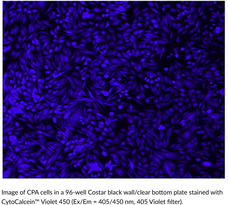
-
GC43357
CytoCalcein™ Violet 500
CytoCalcein? Violet 500 is a fluorogenic dye used to assess cell viability.
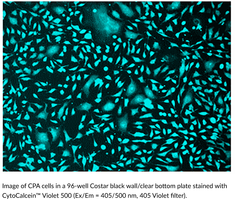
-
GC43364
CytoTrace Red CMTPX
CytoTrace Red CMTPX is a fluorogenic dye used as a long-term cell tracer.

-
GC43362
CytoTrace™ Orange CMTMR
CytoTrace? Orange CMTMR is a rhodamine-based, cell-permeant, vital fluorescent dye that is retained by cells for prolonged periods (>72 hours) and is passed to daughter cells.

-
GC43363
CytoTrace™ Red CFDA
CytoTrace Red? CFDA is a fluorescein-based dye used as a long-term cell tracer.

-
GC18421
Dabcyl-YVADAPV-EDANS
Dabcyl-YVADAPV-EDANS is a fluorogenic substrate for caspase-1.
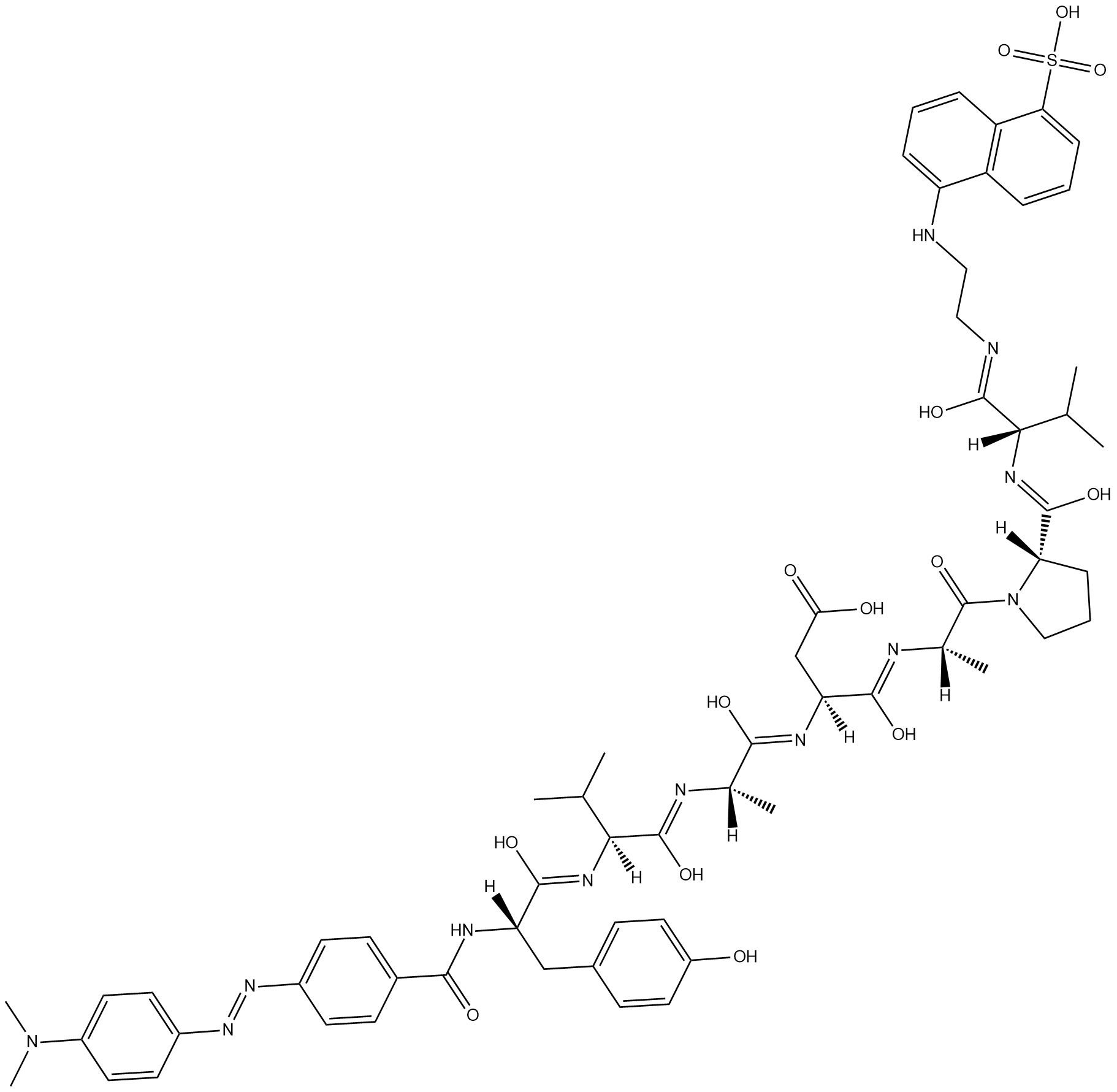
-
GC43372
DAF-2
DAF-2 is a fluorescent detector for nitric oxide (NO) in cells and tissues.

-
GC43375
DAN-1 EE (hydrochloride)
DAN-1 EE is a fluorescent indicator for the bioimaging of nitric oxide (NO).

-
GC45940
DCP-Rho1
A fluorescent probe for sulfenic acid-containing proteins

-
GC43440
Dibenzylfluorescein
Dibenzylfluorescein is a fluorogenic probe that acts as a substrate for specific cytochrome P450 (CYP) isoforms, including CYP3A4, CYP2C8, CYP2C9, CYP2C19, and aromatase (CYP19).

-
GC47222
Difluorinated H2S Fluorescent Probe 1
A fluorescent probe for H2S

-
GC43463
DiIC1(5)
DiIC1(5) is a signal-off fluorescent probe for the detection of mitochondrial membrane potential disruption.

-
GC43477
DISBAC10
DISBAC10 is a voltage-sensitive fluorescent probe used to study cell membrane electrical activity using FRET.
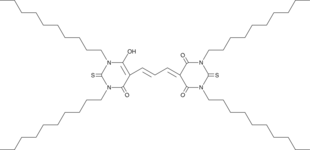
-
GC43545
Dnp-P-Cha-G-Cys(Me)-HA-K(Nma)-NH2
Dnp-P-Cha-G-Cys(Me)-HA-K(Nma)-NH2 is a fluorogenic substrate for matrix metalloproteinase-1 (MMP-1) and MMP-9.

-
GC43546
Dnp-PLALWAR (trifluoroacetate salt)
Dnp-PLALWAR is a fluorogenic substrate for matrix metalloproteinase-1 (MMP-1) and MMP-8.

-
GC43547
Dnp-PLAYWAR (trifluoroacetate salt)
Dnp-PLAYWAR is a fluorogenic substrate for matrix metalloproteinase-8 (MMP-8) and MMP-26.

-
GC43550
Dnp-PLGMWSR (trifluoroacetate salt)
Dnp-PLGMWSR is a fluorogenic substrate for matrix metalloproteinase-2 (MMP-2) and MMP-9.

-
GC43551
Dnp-PYAYWMR (trifluoroacetate salt)
Dnp-PYAYWMR is a fluorgenic heptapeptide substrate for matrix metalloproteinase-8 (MMP-8).

-
GC43552
Dnp-RPLALWRS (trifluoroacetate salt)
Dnp-RPLALWRS is a fluorogenic substrate for matrix metalloproteinase-7 (MMP-7).

-
GC43569
DPPP
DPPP (DPPP) is a fluoregenic peroxide reactive probe.
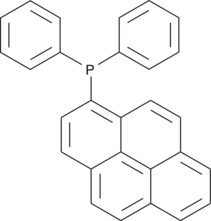
-
GC43614
Enteropeptidase Fluorogenic Substrate
Enteropeptidase fluorogenic substrate is a substrate for enteropeptidase that contains a 7-amino-4-trifluoromethylcoumarin (AFC) moiety.

-
GC48995
Enteropeptidase Fluorogenic Substrate (trifluoroacetate salt)
A fluorogenic substrate of enteropeptidase

-
GC43621
Epoxy Fluor 7
Soluble epoxide hydrolase (sEH) catalyzes the conversion of epoxyeicosatrienoic acids (EpETrEs) to the corresponding DiHETrEs thereby diminishing their vasodilator activity.

-
GC43656
FBBBE
FBBBE is a derivatized fluorescein compound that is used to detect the production hydrogen peroxide (H2O2) by cells.

-
GC16484
FFN 511
FFN 511 is a potent fluorescent false neurotransmitters (FFNs) that targets neuronal vesicular monoamine transporter 2 (VMA T2).
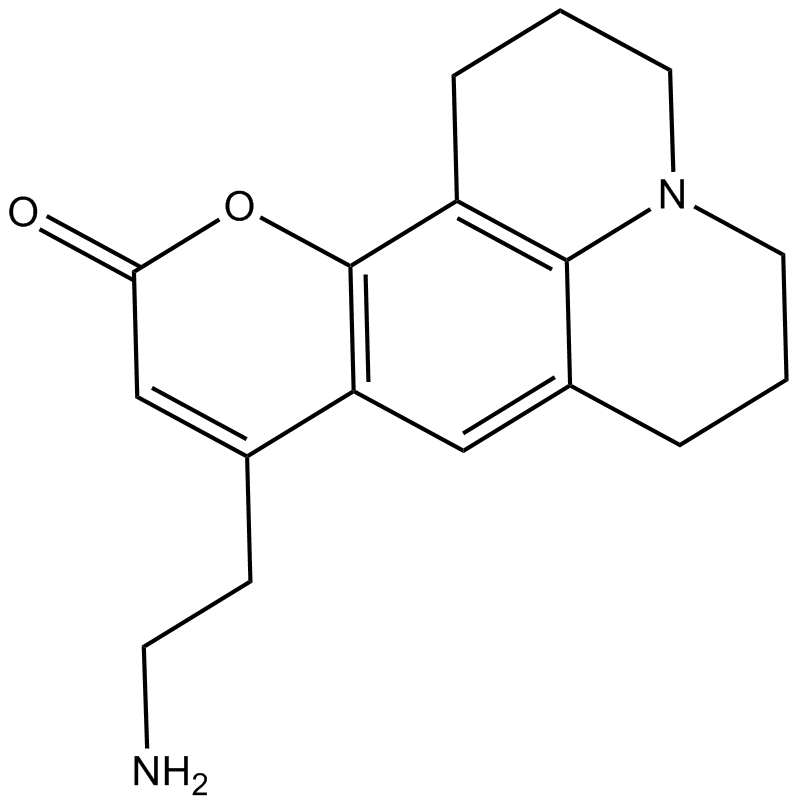
-
GC18579
FFN-102 (trifluoroacetate salt)
FFN-102 is a fluorescent false neurotransmitter (FFN) that is a substrate for the dopamine transporter (DAT) and vesicular monoamine transporter 2 (VMAT2).
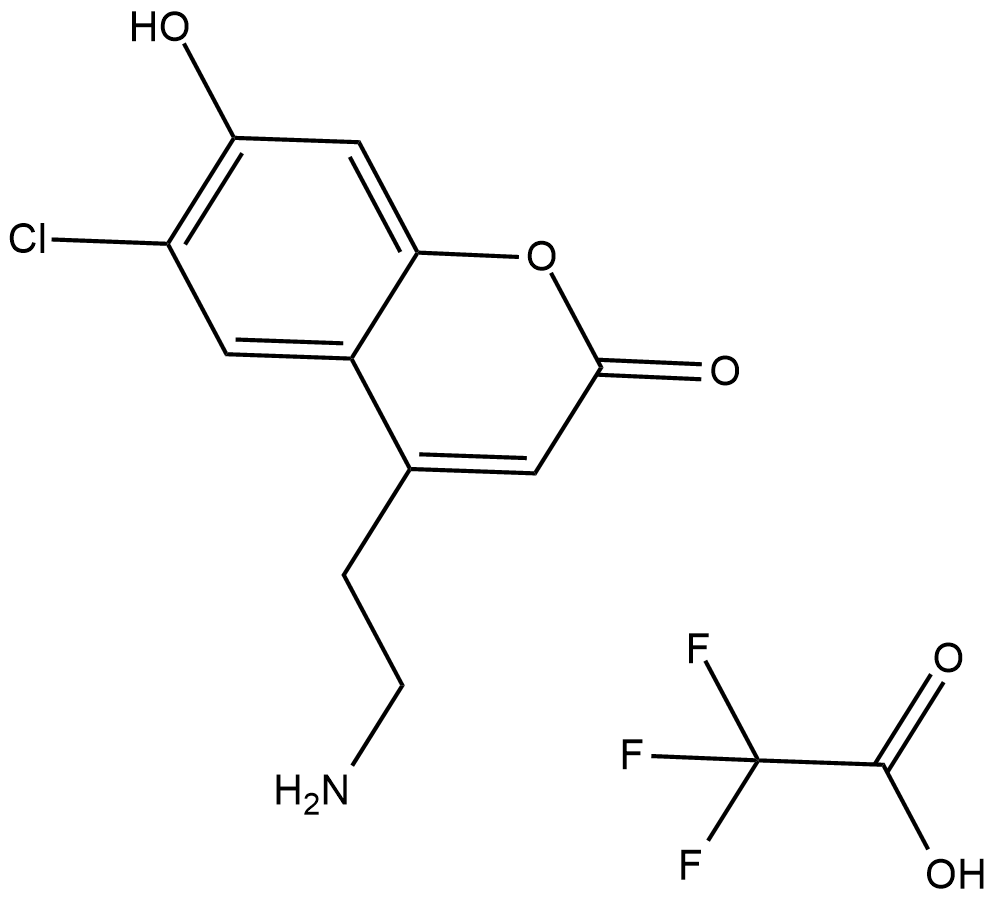
-
GC43674
FlAsH-EDT2
A fluorescent probe that tags proteins in cells

-
GC49739
Fluo-2 (potassium salt)
A cell-impermeable fluorescent calcium indicator

-
GC49458
Fluo-2 AM
A cell-permeable fluorescent calcium indicator

-
GC43681
Fluo-3 (ammonium salt)
Fluo-3 (ammonium salt) is a fluorescent calcium indicator commonly used in flow cytometry and cell-based experiments to detect changes in intracellular calcium levels.

-
GC43682
Fluo-3 (potassium salt)
Fluo-3 (potassium salt) is a fluorescent calcium indicator commonly used in flow cytometry and cell-based experiments to detect changes in intracellular calcium levels.

-
GC43683
Fluo-3 (sodium salt)
Fluo-3 is a fluorescent calcium indicator commonly used in flow cytometry and cell-based experiments to detect changes in intracellular calcium levels.

-
GC43684
Fluo-3FF (potassium salt)
Fluo-3FF is a fluorescent calcium indicator.

-
GC49741
Fluo-4 (potassium salt)
A cell-impermeable fluorescent calcium indicator

-
GC49455
Fluorescein-12-dATP
A fluorescently labeled form of dATP

-
GC49746
Fluorescein-12-dCTP
A fluorescently labeled form of dCTP

-
GC49456
Fluorescein-12-dGTP
A fluorescently labeled form of dGTP

-
GC43700
FSB
FSB is a fluorescent probe that has been used for the detection of amyloid plaques in human postmortem brain from patients with Alzheimer's disease and of curli amyloid fibers in E.

-
GC43711
Fura-2 (potassium salt)
Fura-2 (potassium salt) is a scaled fluorescent dye that can be used for intracellular calcium imaging with the Kd value of 140 nM.

-
GC43712
Fura-2 (sodium salt)
Fura-2 is a ratiometric fluorescent calcium indicator that can be used to detect calcium in cells.

-
GC16578
Fura-2 AM
Fluorescent Ca2+ indicator
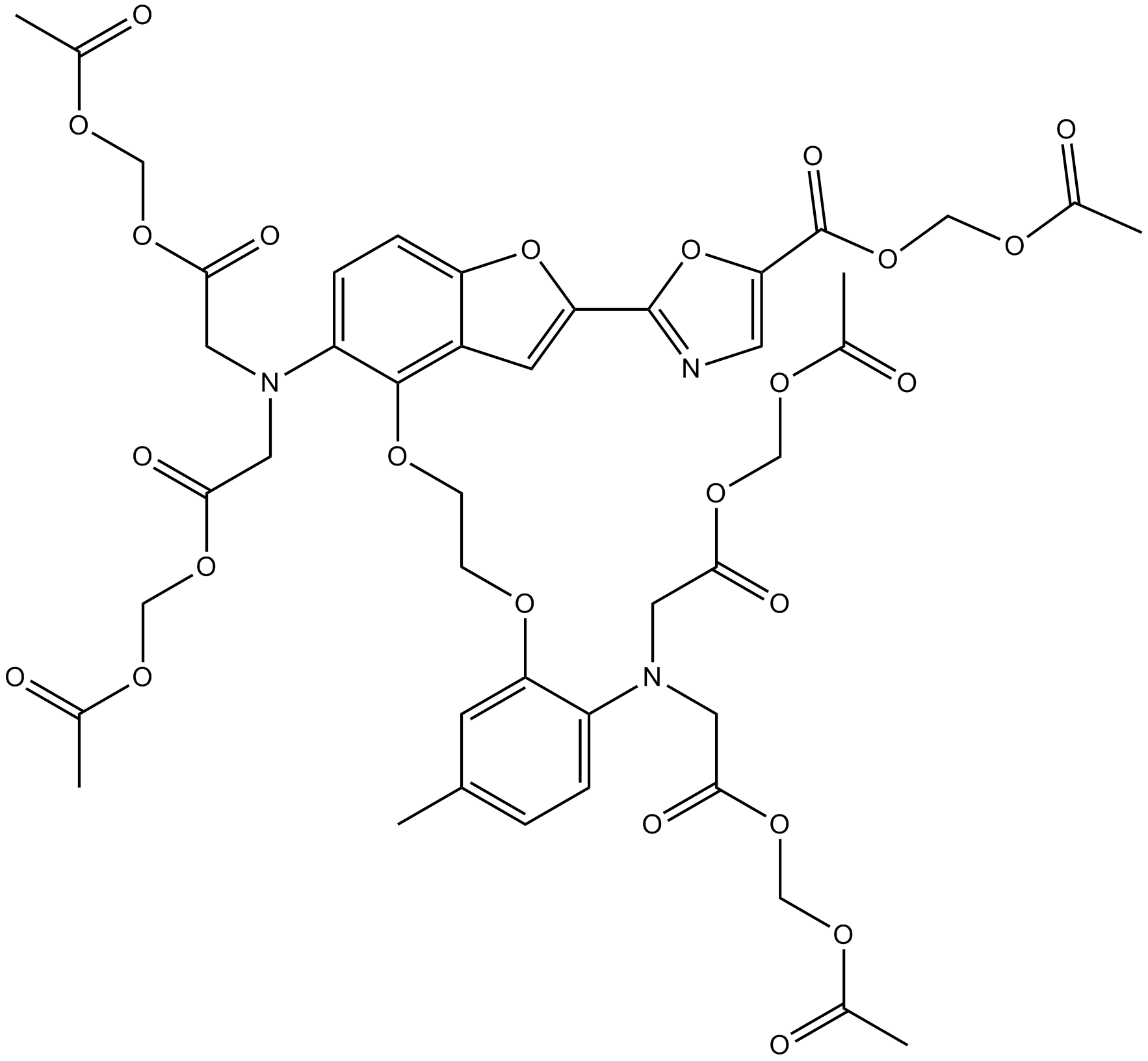
-
GC49462
Fura-2 Leakage Resistant (potassium salt)
A cell-impermeable, ratiometric fluorescent calcium indicator
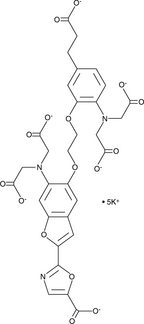
-
GC49465
Fura-2 Leakage Resistant AM
A cell-permeable, ratiometric fluorescent calcium indicator

-
GC43713
Fura-FF (potassium salt)
Fura-FF (potassium salt) is a low-affinity fluorescent dye for calcium (Ex/Em: 365/514 nm in the absence of calcium; 339/507 nm in the presence of a high calcium concentration).

-
GC43714
Fura-FF AM
Fura-FF AM is a cell-permeable acetoxymethyl ester of the fluorescence calcium indicator fura-FF (potassium salt).

-
GC45668
Gly-Arg-AMC (hydrochloride)
A fluorogenic substrate for cathepsin C

-
GC18434
Gly-Gly-AMC
Gly-Gly-AMC is a fluorogenic peptide substrate.
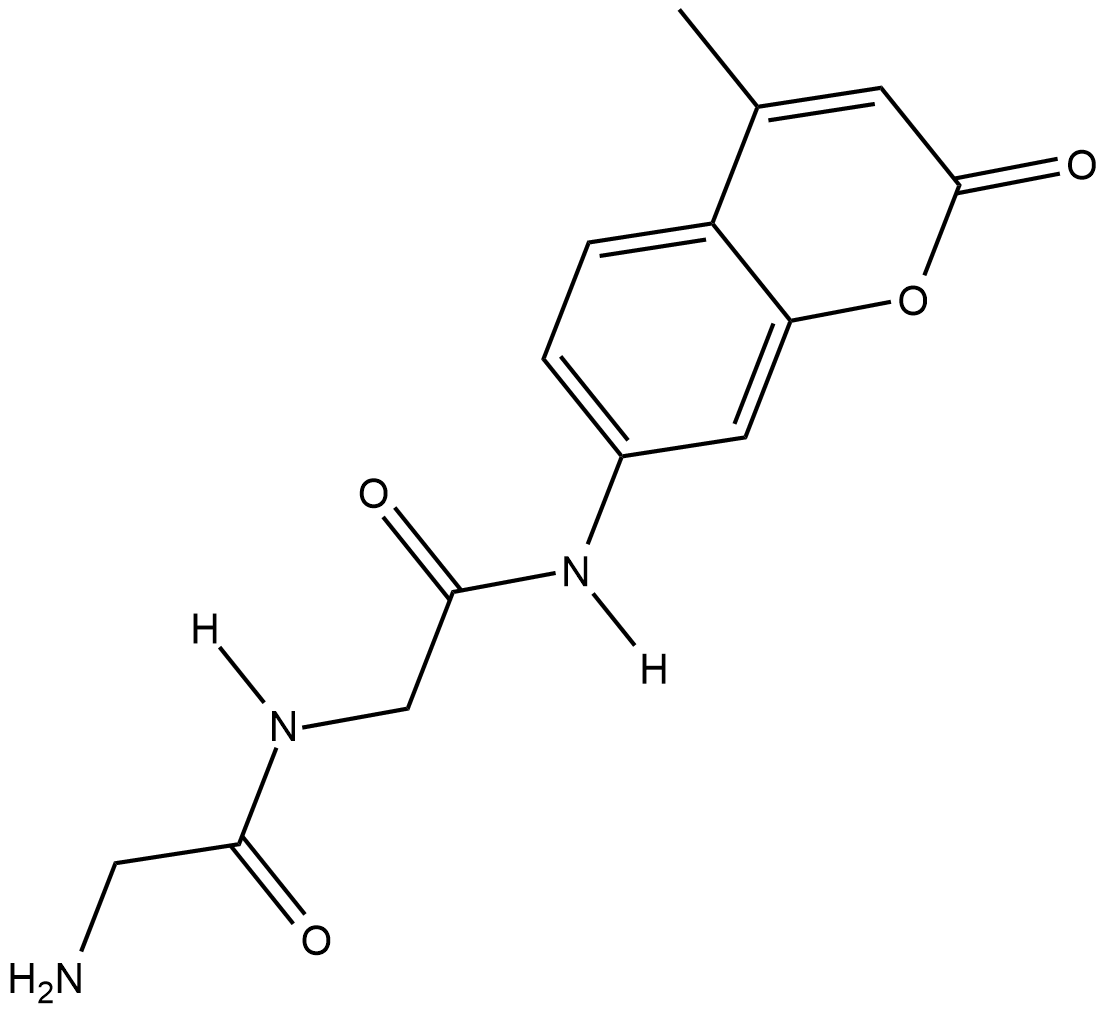
-
GC43783
Green CMFDA
Green CMFDA, as a non-terminal, non-fluorescent probe, can be cleaved by non-specific esterases common to living cells, producing a fluorescent compound, fluorescein, visible using a fluorescent microscope.

-
GA22503
H-Gly-Pro-AMC . HBr
H-Gly-Pro-AMC . HBr is a fluorescent dye, it can be used as a specific fluorescent substrate for detecting Dipeptidyl peptidase IV (DPP-IV) activity.

-
GC43870
HPF
Hydroxyphenyl fluorescein (HPF) is the reagent that can directly detect highly reactive oxygen species (hROS).
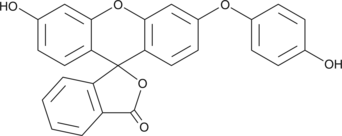
-
GC45743
ICAAc
A solvatochromic fluorophore and pH probe

-
GC43899
Indo-1 (potassium salt)
Indo-1 is a ratiometric fluorescent calcium indicator.

-
GC43900
Indo-1 (sodium salt)
Indo-1 is a ratiometric fluorescent calcium indicator.

-
GC49460
ING-2 AM
A cell-permeable fluorescent sodium indicator

-
GC49468
IPG-1 AM
A cell-permeable fluorescent potassium indicator

-
GC49469
IPG-1 TMA
A cell-impermeable fluorescent potassium indicator

-
GC49463
IPG-2 AM
A cell-permeable fluorescent potassium indicator

-
GC49466
IPG-2 TMA
A cell-impermeable fluorescent potassium indicator

-
GC48396
IR 780
A fluorescent probe for in vivo tumor cell imaging

-
GC48378
IR 783
A fluorescent probe for in vivo tumor cell imaging

-
GC16885
K 114
Potent amyloid fibril-specific fluorescent dye
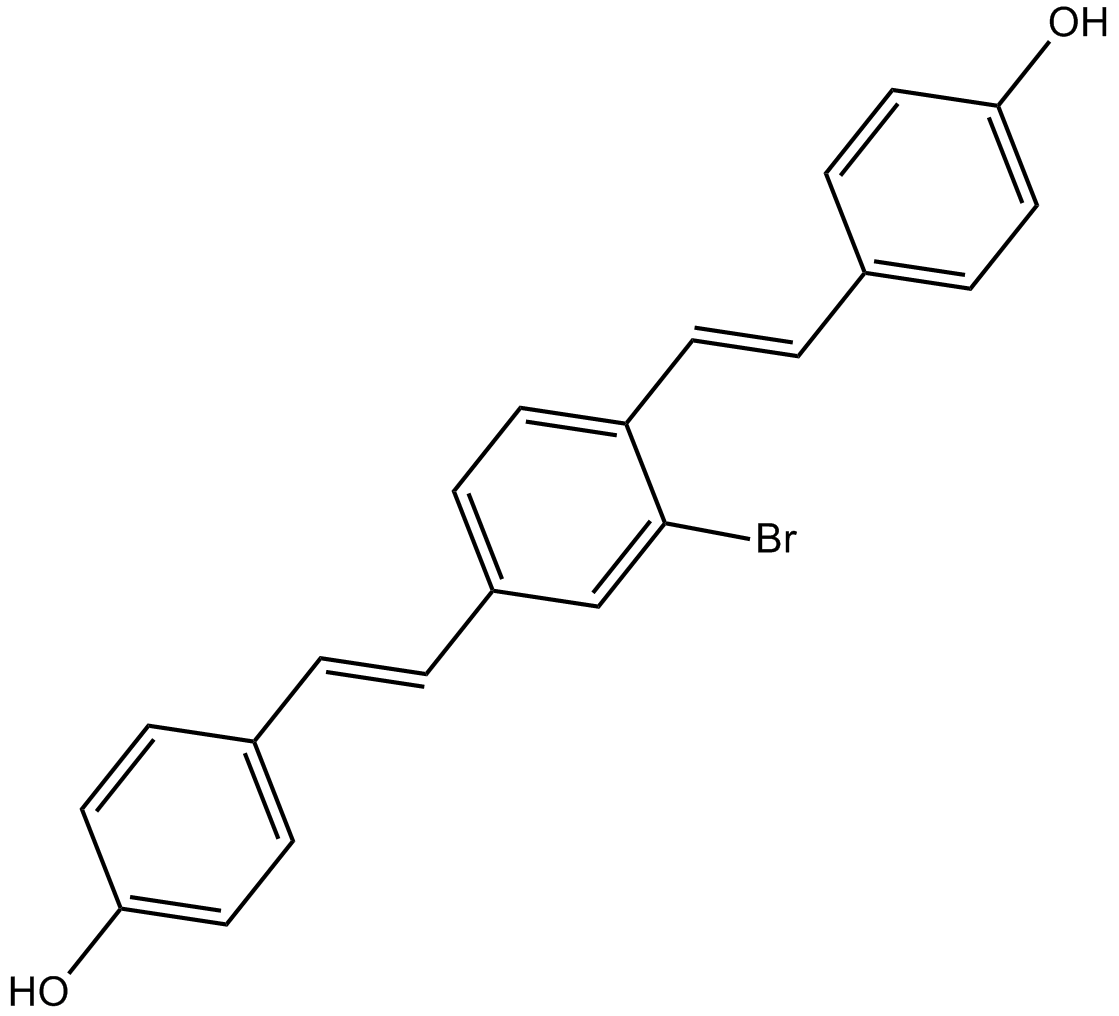
-
GC48975
L-ANAP (trifluoroacetate salt)
A fluorescent unnatural amino acid

-
GC49205
L-Leu-AMC (hydrochloride)
L-Leucine-7-amido-4-methylcoumarin (Leu-AMC) hydrochloride is a bright blue fluorogenic peptidyl substrate for LAP3 (leucine aminopeptidase).

-
GC49604
Lumogallion
Lumogallion is a highly sensitive fluorescent reagent for the detection of aluminum, gallium and other metals.

-
GC44100
LysoFP-NH2
LysoFP-NH2 is the fluorescent form of the lysosomal turn-on fluorescent probe for carbon monoxide (CO) lysoFP-NO2.

-
GC40021
LysoFP-NO2
LysoFP-NO2 is a turn-on fluorescent probe for carbon monoxide (CO) that localizes to the lysosome.

-
GC18363
Mca-DEVDAPK(Dnp)-OH
Mca-DEVDAPK(Dnp)-OH is a fluorogenic substrate for caspase-3.
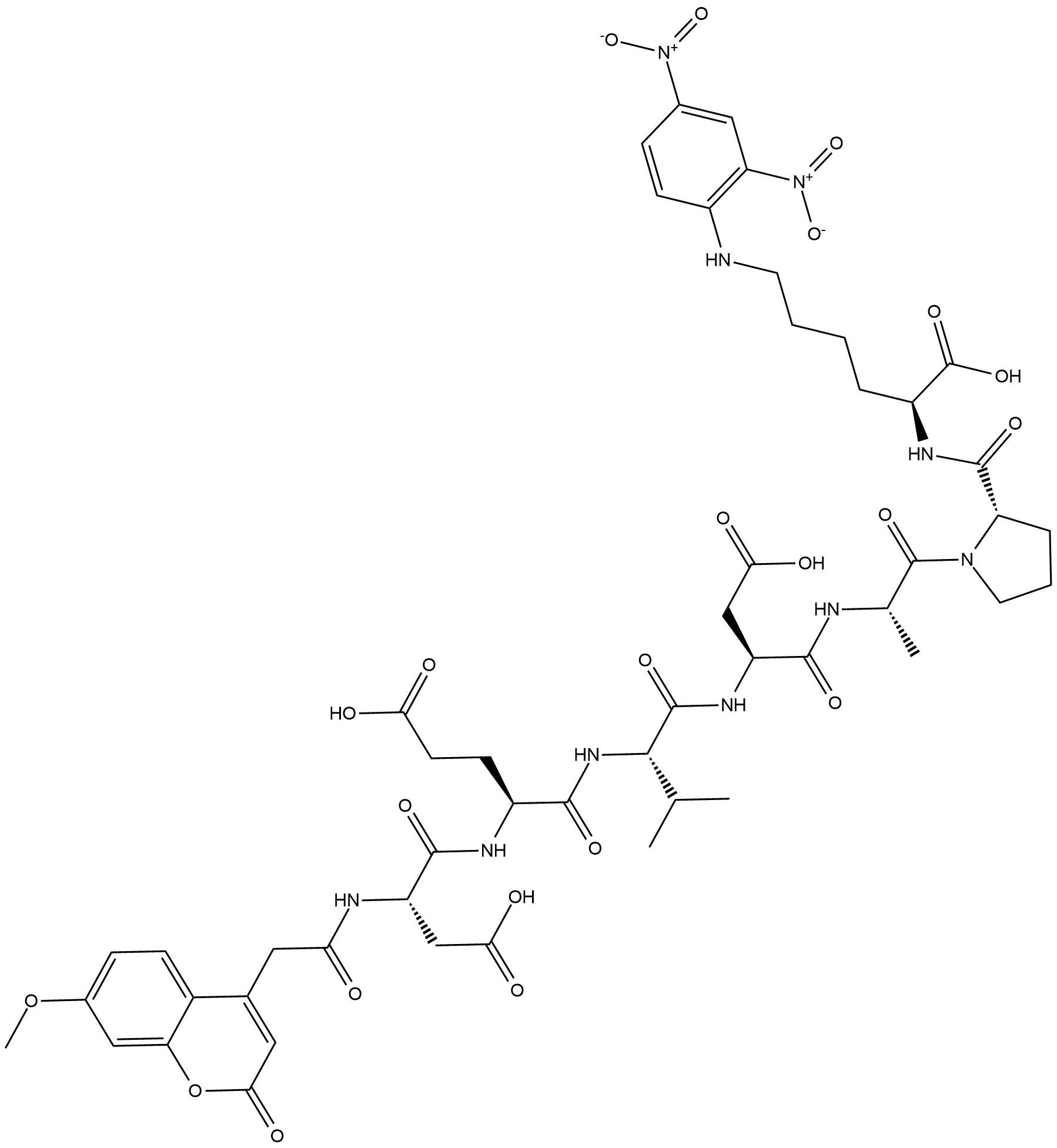
-
GC44132
Mca-PLAC(p-OMeBz)-WAR(Dpa)-NH2
Mca-PLAC(p-OMeBz)-WAR(Dpa)-NH2 is a fluorogenic substrate for matrix metalloproteinase-14 (MMP-14).

-
GC44157
MeOSuc-Ala-Ala-Pro-Val-AMC
MeOSuc-Ala-Ala-Pro-Val-AMC is a fluorogenic substrate for human leukocyte and porcine pancreatic elastase (Km: 362 μM, Ex=380 nm, Em=460 nm).

-
GC47685
MIT-PZR
A mitochondria-targeted fluorescent probe

-
GC44203
MitoPerOx
MitoPerOx is a ratiometric fluorescent probe that can be used to assess changes in lipid peroxidation within mitochondria.

-
GC10713
MitoPY1
fluorescent probe for imaging hydrogen peroxide (H2O2) in mitochondria of living cells

-
GC45744
monoMICAAc
A solvatochromic fluorescent pH probe

-
GC48526
MXS
A fluorescent probe for hypochlorous acid

-
GC40683
N-(2-hydroxyethyl)-Naphthalimide
N-(2-hydroxyethyl)-Naphthalimide is an N-substituted 1,8-naphthalimide used as a fluorescent probe and as a precursor for protection of amine groups.

-
GC44333
N-Butylfluorescein
A fluorescent compound

-
GC44314
Naphthol AS-BI-Phosphate
Naphthol AS-BI-phosphate is a fluorogenic substrate for acid and alkaline phosphatases.

-
GC45521
NBD-Fructose

-
GC18360
NFF-3
NFF-3 is a fluorogenic substrate of matrix metalloproteinases (MMPs).
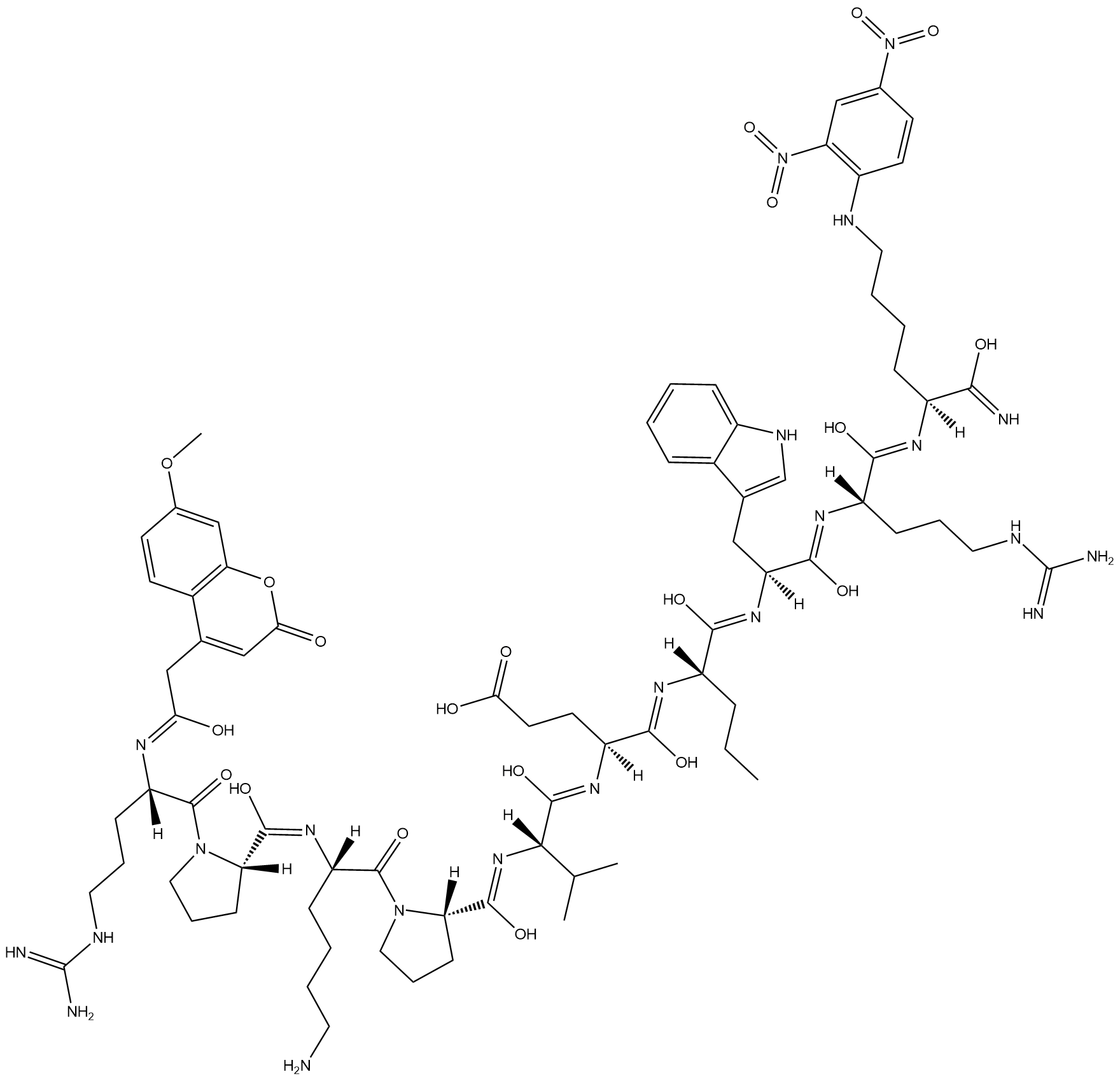
-
GC44399
NIAD-4
NIAD-4 is a fluorescent probe that crosses the blood-brain barrier to bind with high affinity to amyloid-β (Aβ) plaques (Ki = 10 nM).

-
GC17336
NPE-caged-HPTS
Caged fluorescent pH indicator
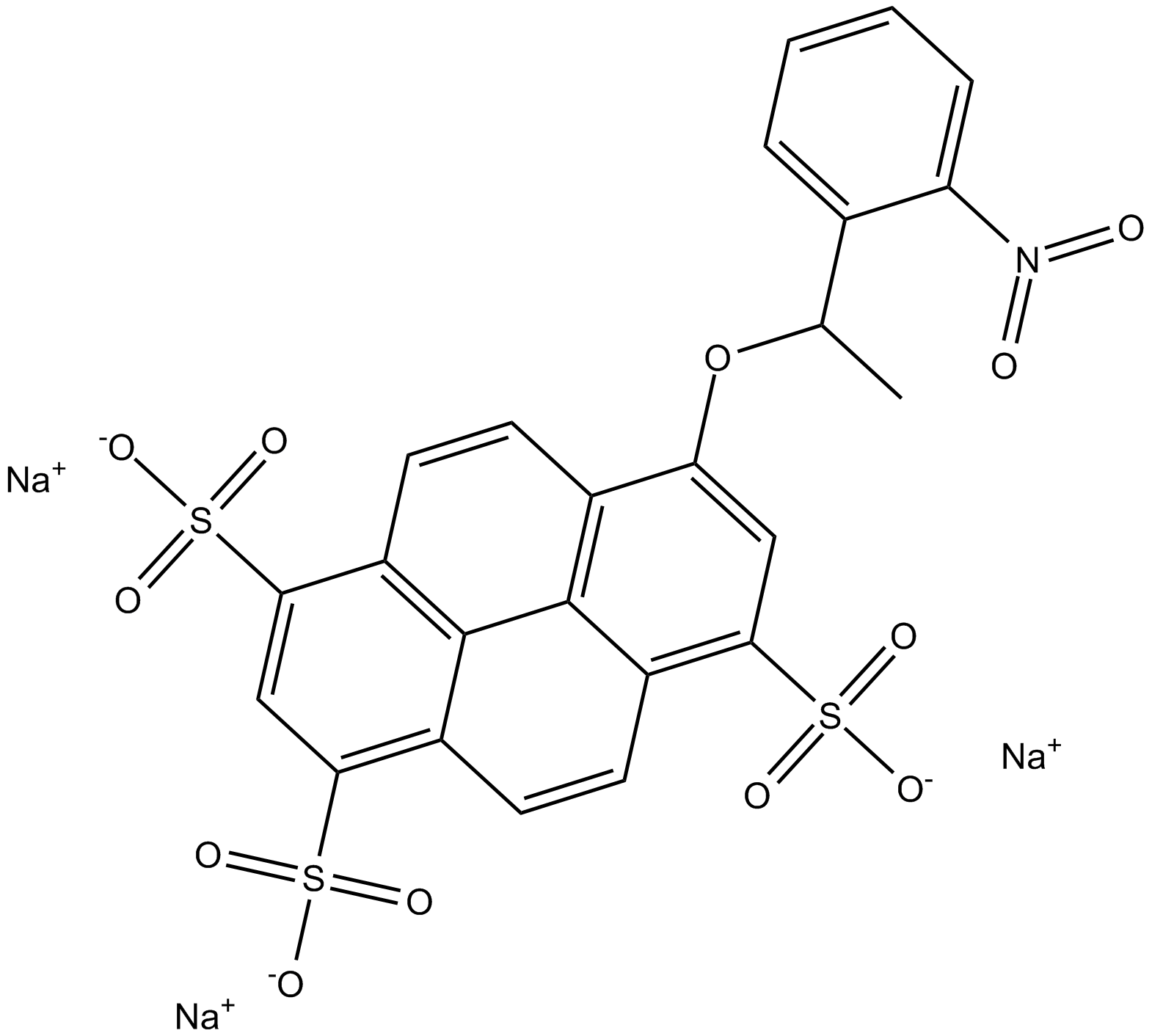
-
GC49621
Oregon Green™ 488
A fluorinated fluorescein dye
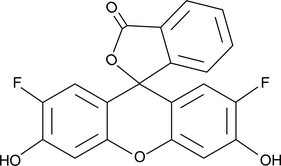
-
GC44574
PBD-BODIPY
PBD-BODIPY is a probe for the spectrophotometric measurement of autoxidation reactions.

-
GC18477
PBFI AM
PBFI AM is a cell-permeable, potassium-sensitive fluorophore used to measure potassium changes in cells and intracellular compartments.
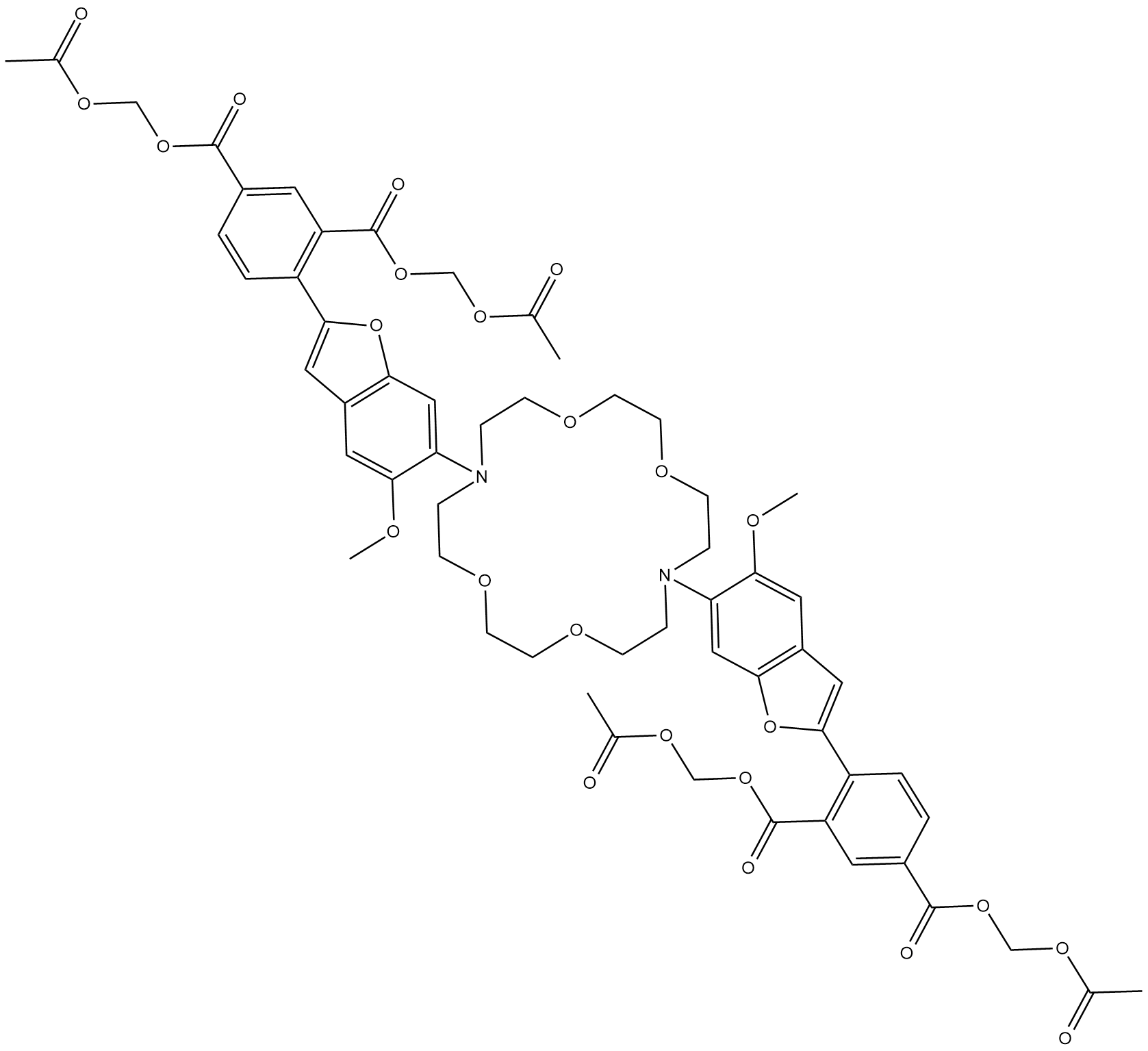
-
GC44594
Pentafluorobenzenesulfonyl fluorescein
Reactive oxygen species (ROS) play important roles in the initiation and progression of many disease processes.

-
GC18066
Peroxy Orange 1
fluorescent probe for imaging hydrogen peroxide (H2O2)
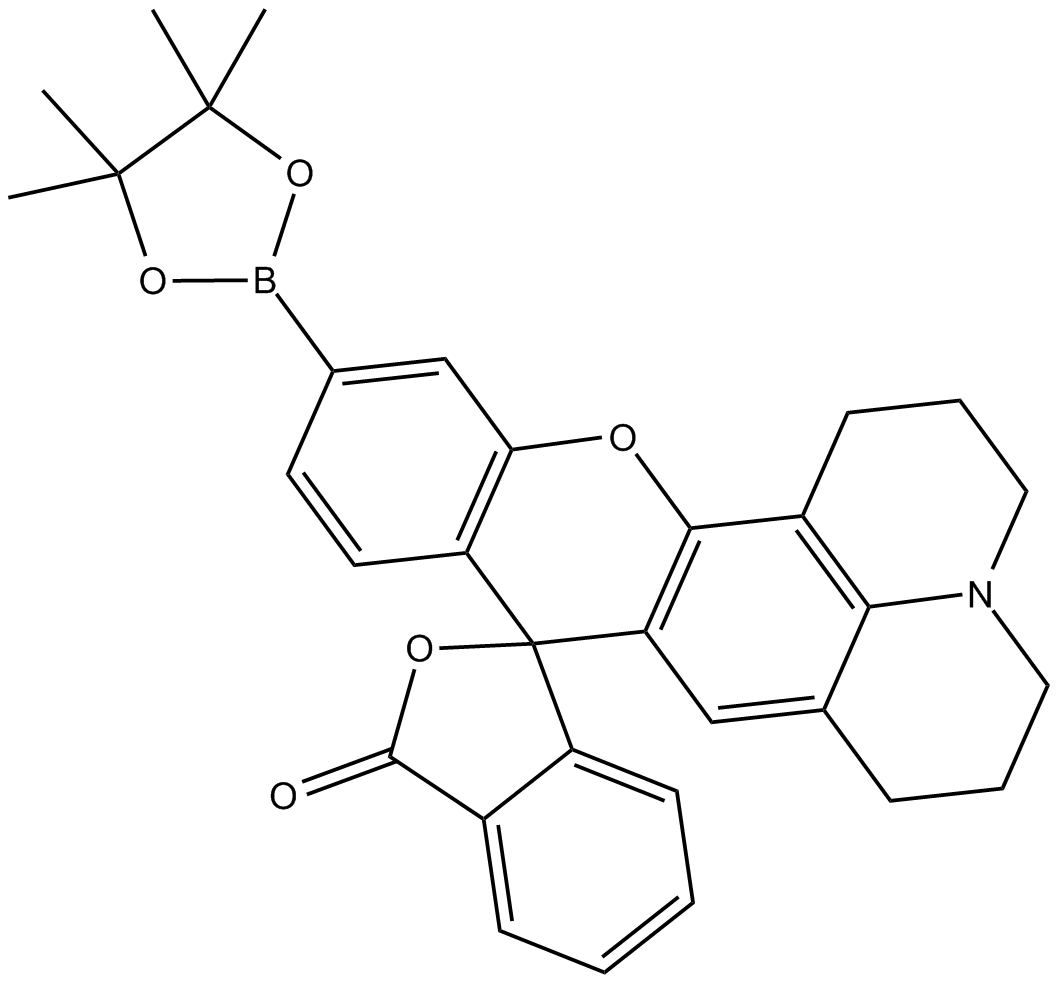
-
GC44618
Phalloidin-AMCA Conjugate
Phalloidin-AMCA conjugate is a blue fluorophore that specifically labels filamentous actin (F-actin).

-
GC44620
Phalloidin-Tetramethylrhodamine Conjugate
Phalloidin-retramethylrhodamine conjugate is an orange fluorescent probe (ex/em = 546/575 nm) that selectively binds to F-actin.

-
GC40243
Phen Green SK diacetate
Phen Green SK diacetate (PGSK) represents a fluorescent indicator for heavy metals, demonstrating reactivity towards a range of metal ions encompassing Fe2+, Cd2+, Co2+, Ni2+, and Zn2+.

-
GC40883
PHOME
EpETrE metabolizes arachidonic acid such as 11(12-EpETrE and 14(15)-EpETrE have been identified as endothelium derived hyperpolarizing factors with vasodilator activity.

-
GC45680
Prodan
A solvatochromic fluorescent probe

-
GC49691
PSP
A two-photon fluorescent probe for H2Sn

-
GC44796
Quin-2 (potassium salt)
Quin-2 is a high-affinity fluorescent calcium indicator (Kd = 115 nM for calcium).

-
GC46210
Quinacrine mustard (hydrochloride)
Quinacrine mustard (hydrochloride) is a fluorochrome.

-
GC44808
ReAsH-EDT2
ReAsH-EDT2 is a fluorescent, membrane-permeable biarsenical compound that binds covalently to tetracysteine sequences, which are engineered into target proteins.

-
GC44812
Renin Fluorogenic Substrate
The renin fluorogenic substrate consists of the normal peptide substrate for renin which has been linked to the fluorophore EDANS at one end and to a non-fluorescent quenching molecule (Dabcyl) at the other.

-
GC45556
Resorufin β-D-Galactopyranoside

-
GC18570
Resorufin Acetate
Resorufin Acetate is a fluorometric probe that acts as a substrate for cytosolic aldehyde dehydrogenase (ALDH1A1) esterase activity.
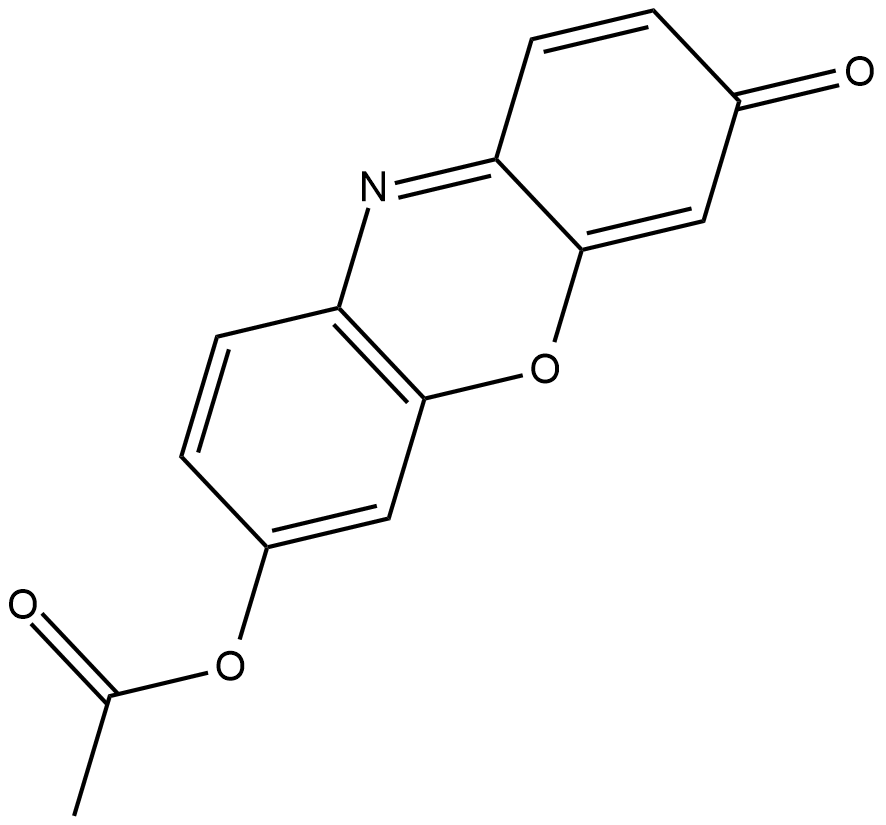
-
GC44819
Resorufin benzyl ether
Resorufin benzyl ether is a fluorometric probe that acts as a substrate for cytochrome P450 (CYP)3A4.

-
GC41615
Resorufin butyrate
Resorufin butyrate is a fluorogenic substrate for triglyceride lipases that is amenable to high-throughput analyses.



